Courses
The best courses you can play in Mississippi
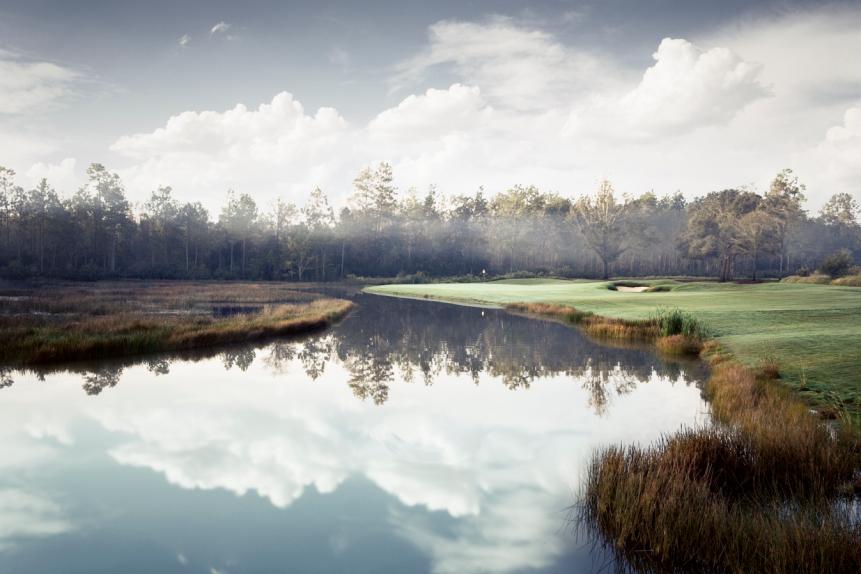
Andy Anderson (208.587.3161)
Although it didn't get built for another 15 years, Fallen Oak was first conceived in the early 1990s by Las Vegas casino mogul Steve Wynn soon after Tom Fazio had completed Shadow Creek. Wynn wanted Fazio to design a similar course for his Beau Rivage casino hotel on the Mississippi Gulf Coast. Wynn's empire got swallowed by MGM Grand, which ultimately had Fazio create Fallen Oak. Unlike Shadow Creek, it's built on rolling forest and wetlands, with no need for mammoth earth-moving.
View Course
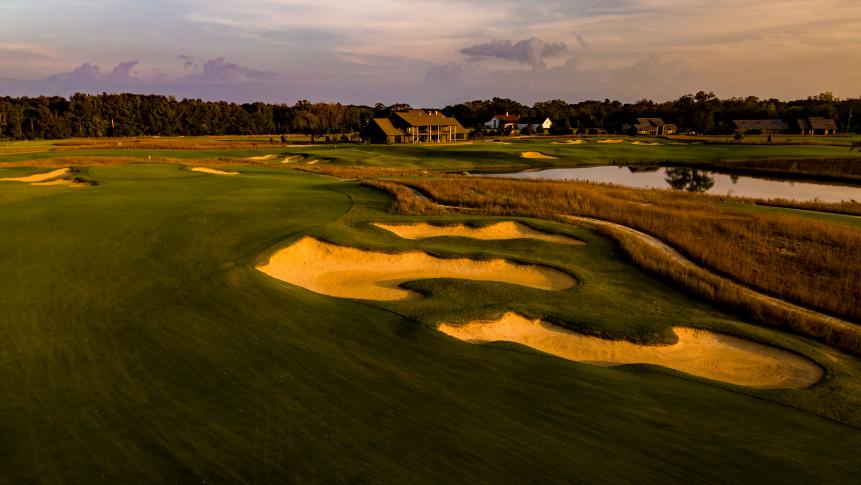
From Golf Digest Architecture Editor emeritus Ron Whitten:
Back in mid-1980s, George Bryan, who ran Bryan Foods, now part of Sara Lee Corp., created Old Waverly Golf Club in tiny West Point, Miss., a Bob Cupp/Jerry Pate design and former U.S. Women’s Open host that to me is a bit underrated. In the early 2000s, Bryan bought an old dairy farm (Knob Hill Dairy) across the highway and hired Gil Hanse to give him an Old School public golf course. George named it Mossy Oak, after a West Point company of the same name that supplies outdoor camouflage gear. (The company has a 10-percent interest in the course.) He was going to call it Howlin' Wolf after a legendary blues singer born in West Point, but his heirs wanted too much money.
Hanse got the job before he was awarded the Rio Olympics design in 2012, and it was the first project he tackled after completing his work in Brazil. The site footprint is smaller than Old Waverly across the road, but except for some cottages along No. 10, there's no residential on Mossy Oak, so the course feels more expansive.
Hanse's design takes advantage of a prominent diagonal ridge that runs across the land, and his superb routing works up, down and sideways across the topography. There’s a stream that comes prominently into play and a big irrigation lake over which the par-3 11th plays to a green that, to me, looks suspiciously like Alister MacKenzie’s original 16th green at Augusta National. A coincidence, but I’m not sure.
I got a chuckle on the first hole. Hanse long ago declared war on golf course trees everywhere (only 19 remain at Mossy Oak; from the sixth green you can see all 18 flags). Yet he built a bunker left of the first green that has a massive, ugly cedar tree growing out of it. You can be in the bunker and blocked from a shot to the green by fir branches. How on earth did that tree survive? Or was it planted there?!
Gil showed his awareness of current events when he shaped a massive 30,000 square-foot fairway bunker on the par-5 17th and named it “Grant’s Tomb,” a clear acknowledgement that nearby Mississippi State University had just become the home of President U.S. Grant’s official papers. But the name didn’t stick; club officials opted to honor their boss, so they now call that enormous trap, “George’s Bunker.” The name just doesn’t quite carry the same portent.
I like a lot of things about Mossy Oak, particularly the par-3 15th, a mirror image of the fifth at Hanse's Streamsong Black, which itself is a version of the Calamity hole at Royal Portrush, and I really liked the par-4 eighth, which plays over a creek and uphill between huge oaks to a green that slopes gently front to back. The par-4 13th is another fine hole, with a fairway that kicks left toward a stream, much in the manner of Merion East's fifth hole. I'm also a fan of the aforementioned 17th, which plays uphill to a plateau fairway into which that huge bunker is embedded. But it's 75 yards short of the green, which is well beyond the crest of the plateau and needs an extra tall flagstick just to pose a target. This is a very unusual hole.
I'm also a fan of Hanse's bunkering at Mossy Oak. It's big sweeping stuff like seen as some Tillinghast designs such as Ridgewood. And the sand is earthen toned, not bright white. Bryan told me they trucked it in from a river six miles away.
A couple of things I didn't care for: The green on the par-4 second has two bunkers on its left flank that also serve as fairway bunkers on the par-5 fifth hole going in the opposite direction. Granted, the fifth fairway is probably 50 yards wide and those bunkers are midway between the tee shot landing area and the second shot landing area, but the lawyer in me still feels it's a lawsuit waiting to happen.
And on that fine par-4 13th hole, there's a cart path going uphill between two greenside bunkers that spills out onto an area directly in the firing line of the 14th tee. In Hanse's defense, I should point out that he didn't lay out that cart path. Bryan told me the maintenance staff installed it at his direction because there was nowhere else to take carts, given the creek down the left and around the back of the 13th green.
Those observations will probably irritate Hanse, who has told me how annoyed he is that I seem to nitpick every one of his designs. It's not personal; I nitpick everybody's designs. That was my job for 35 years.
View Course
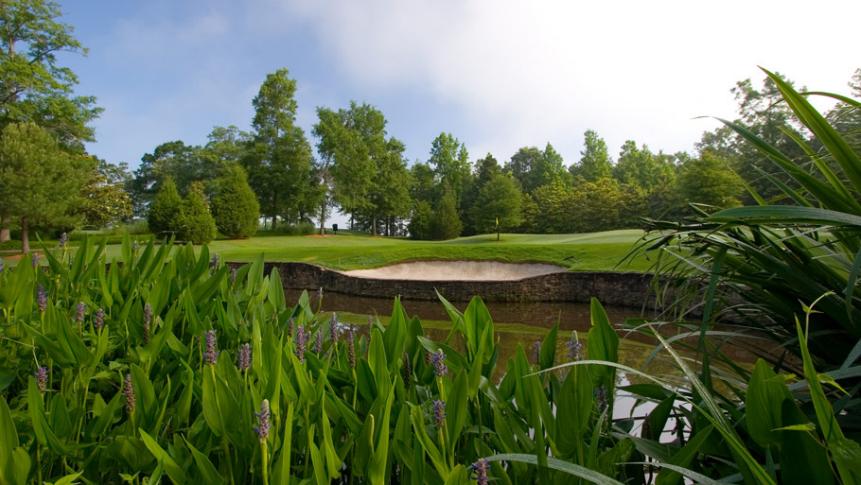
From Golf Digest Architecture Editor emeritus Ron Whitten:I've always admired Jerry Pate's work in golf architecture. He was one of the few PGA Tour pros who really got down and dirty in golf design, and I especially liked the few courses he did with architect Bob Cupp. Their second collaboration was Old Waverly in tiny West Point, Miss., a dream project of West Point native George Bryan, who at the time was chairman of the meat division of the Sara Lee Corporation based in the tri-city area (West Point, Starkville and Columbus) known as Mississippi's Golden Triangle.Cupp was just two years removed from his employment as Jack Nicklaus’ chief designer, and Pate was still active on the PGA Tour when they started the project in August 1986. Both spent a lot of time on the site. I remember Pate was as proud of the massive drainage system he successfully persuaded Old Waverly to adopt as he was of the many strategies he helped impart in its holes.The course opened in August 1988 to immediate acclaim, finishing No. 3 among Golf Digest's Best New Private Courses in 1989. It was subsequently the site of Juli Inkster’s first U.S. Women’s Open win in 1999 and when Gabriela Ruffels won the 2019 U.S. Women's Amateur there, she became the first Australian to hold the trophy. Old Waverly has ranked among America’s 100 Greatest in 1995 to 1998 and again in 2005 to 2006. More recently, the former private club became semi-private, and now accepts outside play (in a package deal with its second 18 just to the northwest, the Gil Hanse-designed Mossy Oak.) In Golf Digest's latest list of America’s 100 Greatest Public Courses, Old Waverly ranks 75th.It's always been one of the loveliest courses I've ever played. On a recent visit I found it a bit scruffier than I'd recalled—the once gurgling stream over which you play on the par-3 seventh is now full of tall weeds, for example—but I still think it's the best of the Cupp-Pate collaborations. It weaves from old cattle ranch pasture into dense trees and out again, with five holes on the back nine strung along the shoreline of the 40-acre irrigation pond known as Lake Waverly. I've always liked how the designers posed different fairway routes by using center pot bunkers on certain holes and diagonal streams on others.But the feature I find most interesting at Old Waverly are the number of crossbunkers that Cupp and Pate used. There's one off the very first tee, not much more than a hundred yards off it, stretching almost clear across the corridor. Another is encountered off the tee on the par-5 second, this time a cluster of four traps—three small, one big—nestled in a depression in front of the tee complex. Another is found on the ninth, this one a long finger poking into the fairway from the left, again some 100 yards off the tee. Another cluster of small bunkers sits just off the tee of the 13th and one last massive crossbunker is recessed at the start of the 16th fairway. The designers called these things their "19th century bunkers," because they brought to their minds the ramparts built in the earliest days of golf in America.What I find interesting in retrospect is that Cupp and Pate did these things back in 1988, decades before the present generation of golf architects are making statements with the same sort of crossbunkers that they attribute to the Golden Age architects. Guys like Doak and Hanse and Silva and others use them mainly because they like the artistry of the things; on certain holes, a crossbunker right in front of the tee just seems to fit and frame the tee shot.Of course, A.W. Tillinghast spent a couple of years in the 1930s traveling the country urging clubs to save money by filling in such crossbunkers, calling them, "Duffer Headaches." What's different today, of course, is that most courses now have far more tee boxes per hole, so duffers can move up and easily carry such crossbunkers or avoid them entirely.And that was true back in 1988 at Old Waverly. Cupp and Pate had four sets of tees on every hole, most of them placed diagonally along the lines of play so the crossbunkers weren't really a factor for high-handicappers from the forward tees.I'm not yet prepared to declare that Bob Cupp and Jerry Pate reignited the crossbunker craze that still exists in golf architecture these days, but I'm pretty certain I'm correct in saying that no designer has used them on a single course with the frequency that Cupp and Pate did at Old Waverly more than 30 years ago.
View Course

Russell Kirk
From Golf Digest Architecture Editor emeritus Ron Whitten:Back in the late 1990s, Tom Fazio and Jerry Pate collaborated on the design of two golf courses for the Mississippi Band of Choctow Indian's casino operation. It was one of the first of a slew of casino golf courses created by native American tribes around the country and was named Dancing Rabbit after a nearby creek where a treaty was signed between the Choctaws and the Federal Government that returned land back to the Indian nation. I followed the construction of both courses, the Azaleas Course, which opened in 1997, and the Oaks Course, which opened two years later.Both remind me of courses found in Birmingham, Ala., with fairways running over red clay hills slashed by creeks and lined in pines and scattered hardwoods. As its name suggests, the Oaks Course has grand old oak trees decorating some holes.Being a fly on the wall, so to speak, I was able to observe some examples of conflicts that arise when creating golf courses. For instance, Fazio wanted bentgrass for the greens on both courses. Pate was urging they use the then-latest hybrid ultradwarf Bermudagrass instead, but Fazio was insistent. So they provided life support systems for the greens, burying electrical plugs for fans that would be placed around each green to provide air circulation. They also installed a SubAir-branded oxygen-injection/water-vacuuming system beneath each green, before seeding the bent. Needless to say, those items increased the construction costs.A year later, when the Azaleas Course was open for play and the Oaks Course was being grassed, I stopped by with Pate. The greens on the Azaleas Course were dead, killed by a fungus called pythium blight, which can wipe out bent greens in a matter of hours. Pate was so upset that he theorized the SubAir system accelerated the pythium blight by sucking the fungus right down into the roots, but in truth, by the time any system was turned on, it was too late.Today, Dancing Rabbit has beautiful greens. Azaleas has ultradwarf Bermuda TifEagle on its greens, while Oaks has Champion Bermuda, another ultradwarf. The lesson: Mississippi’s climate has never been conducive to growing bentgrass.Two other conflicts I observed involved the design of holes. On the third hole of the Azaleas Course, Andy Banfield, Fazio's main design associate back then, wanted to dam up a creek and create a lake along the left side of the fairway—so after clearing pines for the fairway, they cleared more trees, all the way to the creek, then started digging the lake bottom. But ultimately they couldn't get the permit to dam the creek, so they were left with a corridor over 100 yards wide, half hill, half hole. Pate suggested expanding the fairway into the proposed lake bed to create alternate routes.The finished hole now has a vast fairway of upper and lower sections. (And yet I somehow managed to miss the fairway with my drive last time I played it.) With two diagonal bunkers on the slope between the levels, the third hole is attractive and certainly offers a couple of strategic options, but back then, such a patchwork improvisation on an $8-million job made me feel uncomfortable.Second example: on Azaleas’ par-4 14th, tree-clearing had been completed to make the hole a dogleg right. But then Banfield stopped by and decided to relocate the green and make the hole a dogleg left, so he had a new corridor and green site chopped from the forest on the left. That resulted in a huge void on the right where trees had been previously removed. Banfield's solution was to fill the void with a massive bunker. Fair enough. But then another Fazio designer, Tom Griswold, stopped by and had the sand pit planted with trees and vegetation, to give it a Pine Valley look, which even back in the late 1990s was being overused.The result at the time was a strange-looking short par 4, with a green to the left and a massive sandy waste area not really in play on the right. Today, Griswold's trees have grown and matured, and golfers hardly notice that old right-hand fairway that went nowhere.The second lesson I learned: Mistakes should be made on paper, not in the dirt.
View Course
_Andrew%20Culp%20Home%20in%20Two.jpg.rend.hgtvcom.861.574.suffix/1668824402203.jpeg)
Dave Sansom
Grand Bear Golf Club is one of the best courses in Mississippi. Read our experts reviews and discover tee time and scorecard information.
View Course
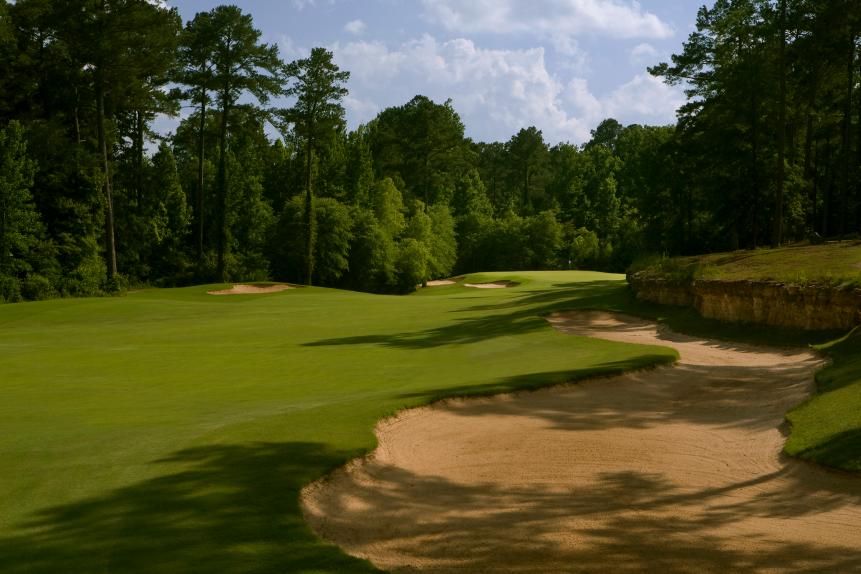
Russell Kirk
From Golf Digest Architecture Editor emeritus Ron Whitten:Back in the late 1990s, Tom Fazio and Jerry Pate collaborated on the design of two golf courses for the Mississippi Band of Choctow Indian's casino operation. It was one of the first of a slew of casino golf courses created by native American tribes around the country and was named Dancing Rabbit after a nearby creek where a treaty was signed between the Choctaws and the Federal Government that returned land back to the Indian nation. I followed the construction of both courses, the Azaleas Course, which opened in 1997, and the Oaks Course, which opened two years later.Both remind me of courses found in Birmingham, Ala., with fairways running over red clay hills slashed by creeks and lined in pines and scattered hardwoods. As its name suggests, the Oaks Course has grand old oak trees decorating some holes.Being a fly on the wall, so to speak, I was able to observe some examples of conflicts that arise when creating golf courses. For instance, Fazio wanted bentgrass for the greens on both courses. Pate was urging they use the then-latest hybrid ultradwarf Bermudagrass instead, but Fazio was insistent. So they provided life support systems for the greens, burying electrical plugs for fans that would be placed around each green to provide air circulation. They also installed a SubAir-branded oxygen-injection/water-vacuuming system beneath each green, before seeding the bent. Needless to say, those items increased the construction costs.A year later, when the Azaleas Course was open for play and the Oaks Course was being grassed, I stopped by with Pate. The greens on the Azaleas Course were dead, killed by a fungus called pythium blight, which can wipe out bent greens in a matter of hours. Pate was so upset that he theorized the SubAir system accelerated the pythium blight by sucking the fungus right down into the roots, but in truth, by the time any system was turned on, it was too late.Today, Dancing Rabbit has beautiful greens. Azaleas has ultradwarf Bermuda TifEagle on its greens, while Oaks has Champion Bermuda, another ultradwarf. The lesson: Mississippi’s climate has never been conducive to growing bentgrass.Two other conflicts I observed involved the design of holes. On the third hole of the Azaleas Course, Andy Banfield, Fazio's main design associate back then, wanted to dam up a creek and create a lake along the left side of the fairway—so after clearing pines for the fairway, they cleared more trees, all the way to the creek, then started digging the lake bottom. But ultimately they couldn't get the permit to dam the creek, so they were left with a corridor over 100 yards wide, half hill, half hole. Pate suggested expanding the fairway into the proposed lake bed to create alternate routes.The finished hole now has a vast fairway of upper and lower sections. (And yet I somehow managed to miss the fairway with my drive last time I played it.) With two diagonal bunkers on the slope between the levels, the third hole is attractive and certainly offers a couple of strategic options, but back then, such a patchwork improvisation on an $8-million job made me feel uncomfortable.Second example: on Azaleas’ par-4 14th, tree-clearing had been completed to make the hole a dogleg right. But then Banfield stopped by and decided to relocate the green and make the hole a dogleg left, so he had a new corridor and green site chopped from the forest on the left. That resulted in a huge void on the right where trees had been previously removed. Banfield's solution was to fill the void with a massive bunker. Fair enough. But then another Fazio designer, Tom Griswold, stopped by and had the sand pit planted with trees and vegetation, to give it a Pine Valley look, which even back in the late 1990s was being overused.The result at the time was a strange-looking short par 4, with a green to the left and a massive sandy waste area not really in play on the right. Today, Griswold's trees have grown and matured, and golfers hardly notice that old right-hand fairway that went nowhere.The second lesson I learned: Mistakes should be made on paper, not in the dirt.
View Course
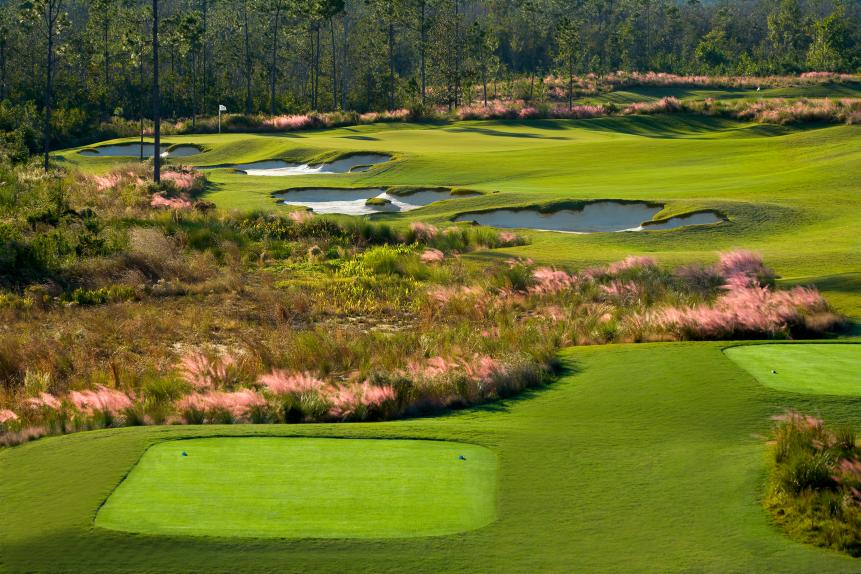
This Jerry Pate design, recognized by Audubon International, makes compelling use of the natural terrain, with native fescues, bunkers and marshlands framing many holes. Currently ranked on our Best in Mississippi list, The Preserve has many forced carries over wetlands and bogs, requiring quality ball-striking off the tee. The Preserve’s natural aesthetic makes it a must-play on a trip to the Mississippi Coast.
View Course

LC Lambrecht
Currently ranked in the top 10 on our Best in Mississippi ranking, Shell Landing is a Davis Love III design just outside Biloxi. The course fits nicely into the natural terrain, playing among rolling marshlands. The fairways are generous, guarded periodically by large fairway bunkers. The greens are vast and undulating, allowing for a variety of possible pin locations.
View Course

A past Best in State member, The Bridges is an Arnold Palmer design situated near the Saint Louis Bay on Mississippi’s Gulf Coast. The course—aptly named for the 21 bridges found across the layout—is a demanding ball-striking test, with trees and bunkers closely guarding many fairways and numerous forced carries over marshlands required.
View Course
